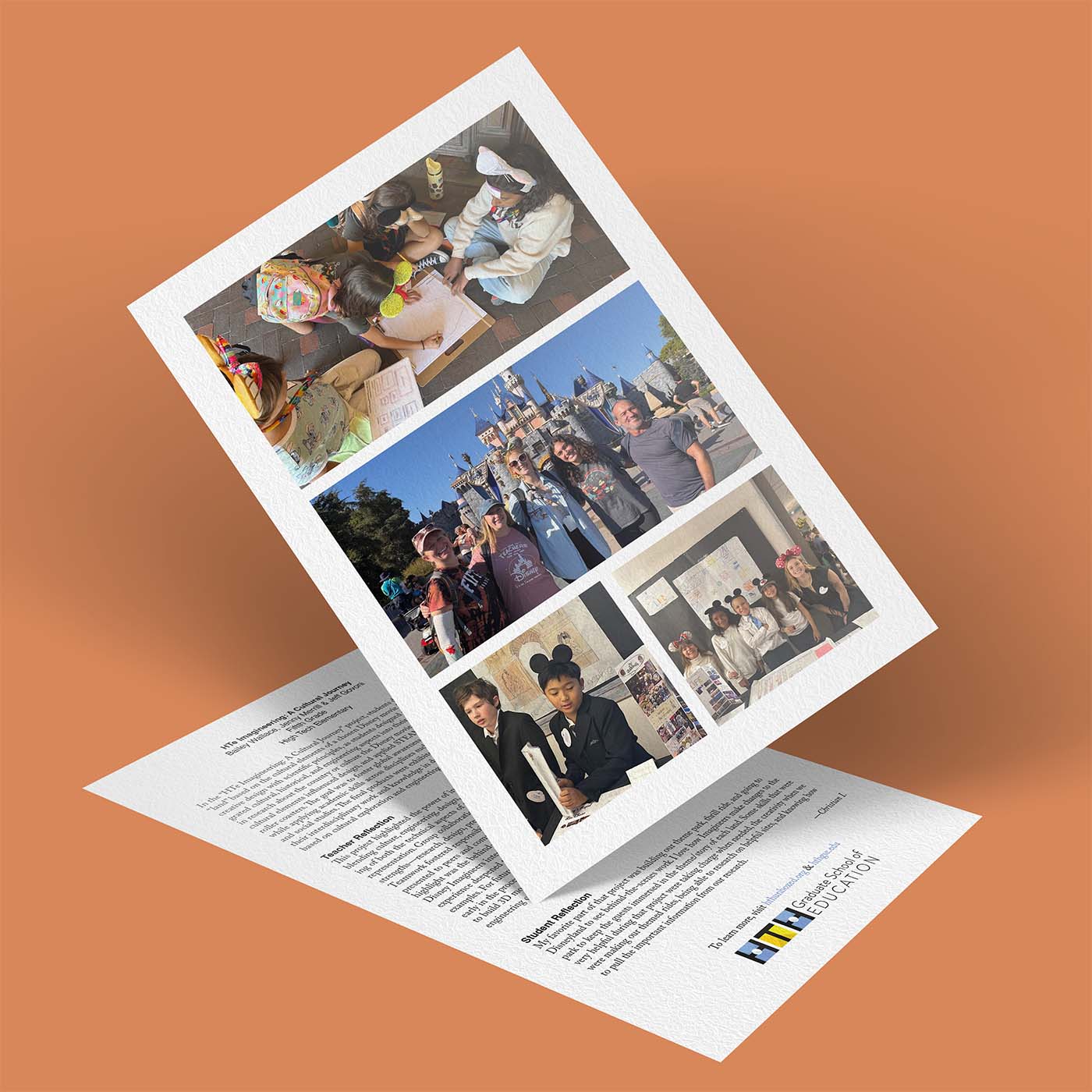
Teachers: Bailey Wallace, Jenny Merrill & Jeff Govoni
Grade & Subjects: Fifth Grade
School: High Tech Elementary
In the “HTe Imagineering: A Cultural Journey” project, students designed a theme park “land” based on the cultural elements of a chosen Disney movie. The project combined creative design with scientific principles, as students designed roller coasters and integrated cultural, historical, and engineering aspects into their theme park. They engaged in research about the country or culture the Disney movie represented, explored how cultural elements influenced design, and applied STEAM principles in engineering the roller coasters. The goal was to foster global awareness, creativity, and critical thinking while applying academic skills across disciplines such as reading, writing, math, science, and social studies. The final products were exhibited to an authentic audience, showcasing their interdisciplinary work and knowledge in designing a fun and educational experience based on cultural exploration and engineering principles.
Teacher Reflection
This project highlighted the power of interdisciplinary learning in engaging students. By blending culture, engineering, design, and STEM, students gained a deeper understanding of both the technical aspects of theme park design and the importance of cultural representation. Group collaboration was a major success. Students brought unique strengths—research, design, presentation—that contributed to well-rounded projects. Teamwork fostered responsibility and peer learning. The final exhibition, where students presented to peers and community partners, added motivation and pride to their work. A highlight was the behind-the-scenes visit to Disneyland, where students observed how Disney Imagineers integrate storytelling and culture into park design. This real-world experience deepened their understanding and inspired their own projects with tangible examples. For future iterations, we would include more opportunities for expert feedback early in the process to help refine student ideas. Additionally, dedicating time for students to build 3D models of their roller coasters would enhance visualization and reinforce engineering concepts through hands-on learning.
—Bailey Wallace
Student Reflection
My favorite part of that project was building our theme park, thrill ride, and going to Disneyland to see behind-the-scenes work. I love how Imagineers make changes to the park to keep the guests immersed in the theme/story of each land. Some skills that were very helpful during that project were taking charge when needed, the creativity when we were making our themed rides, being able to research on helpful sites, and knowing how to pull the important information from our research.
—Christian I.